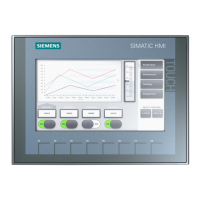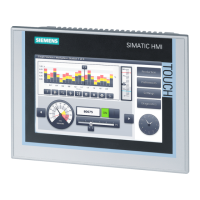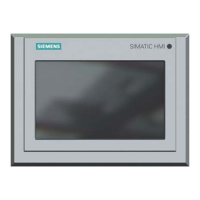Installing system components
3.6 Connecting the connection box
Mobile Panels 2nd Generation
62 Operating Instructions, 09/2018, A5E33876626-AC
Equipotential bonding of connection boxes
Potential differences
Differences in potential between separated plant components can lead to high equalizing
currents over the data cables, destroying the circuits. This situation may arise if the cable
shielding is terminated at both ends and grounded at different system parts.
Differences in potential can also be caused by different mains supplies.
General requirements for equipotential bonding
Differences in potential must be reduced far enough with equipotential bonding conductors to
ensure error-free operation of the relevant electronic components. The following information
must therefore be observed when installing the equipotential bonding:
● The effectiveness of equipotential bonding increases as the impedance of the
equipotential bonding conductor decreases or as its cross-section increases.
● If two plant sections are interconnected by means of shielded data cables and their
shielding is connected at both ends to the grounding/protective conductor, the impedance
of the additionally installed equipotential bonding conductor must not exceed 10% of the
shielding impedance.
● The cross-section of a selected equipotential bonding conductor must be capable of
handling the maximum equalizing current.
Equipotential bonding cables are required between two control cabinets with a minimum
conductor cross-section of 16 mm².
● Use equipotential bonding conductors made of copper or galvanized steel. Connect the
equipotential bonding conductors to the ground / protective conductor over a wide area.
Protect the equipotential bonding conductors against corrosion.
● Clamp the shielding of the data cable on the HMI device flush and near the equipotential
busbar using suitable cable clamps.
● Route the equipotential bonding conductor and data cables in parallel with minimum
clearance between them.
Note
Cable shielding is not suitable for equipotential bond
ing. Always use the prescribed
equipotential bonding conductors. When installing PROFINET networks, always use
cables with a sufficient cross
-
section. Otherwise, there is a risk that interface components
will be damaged or destroyed.
